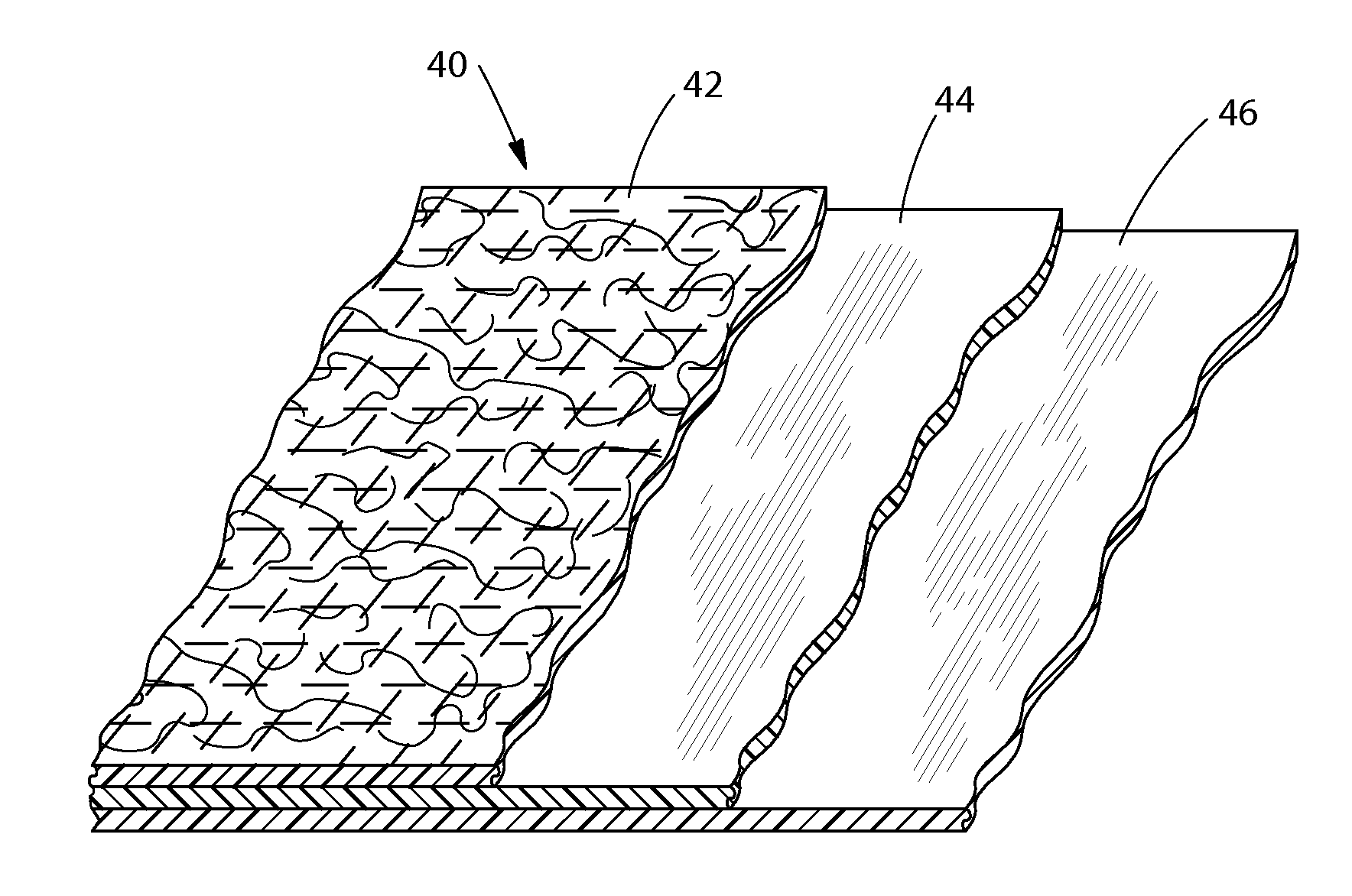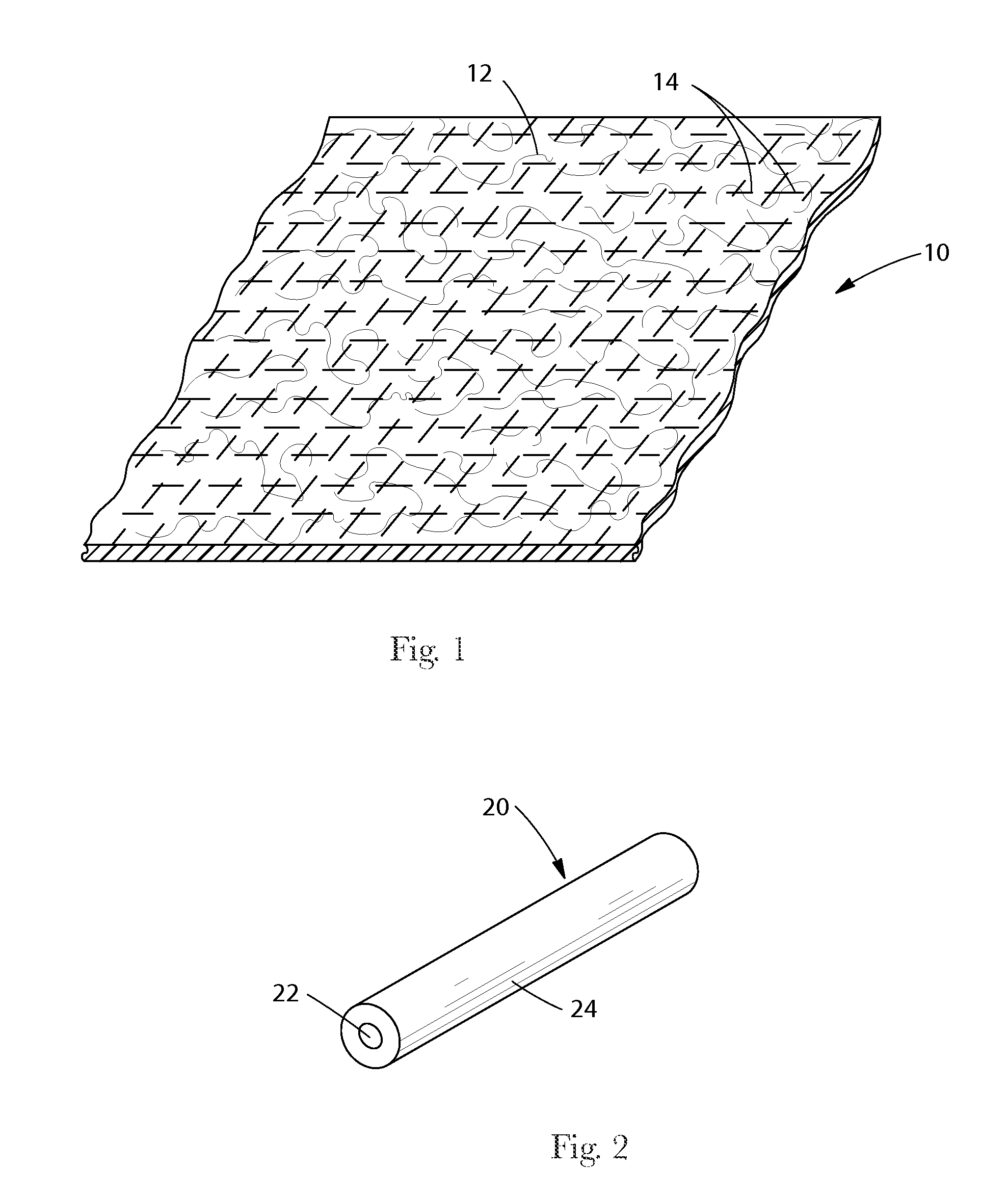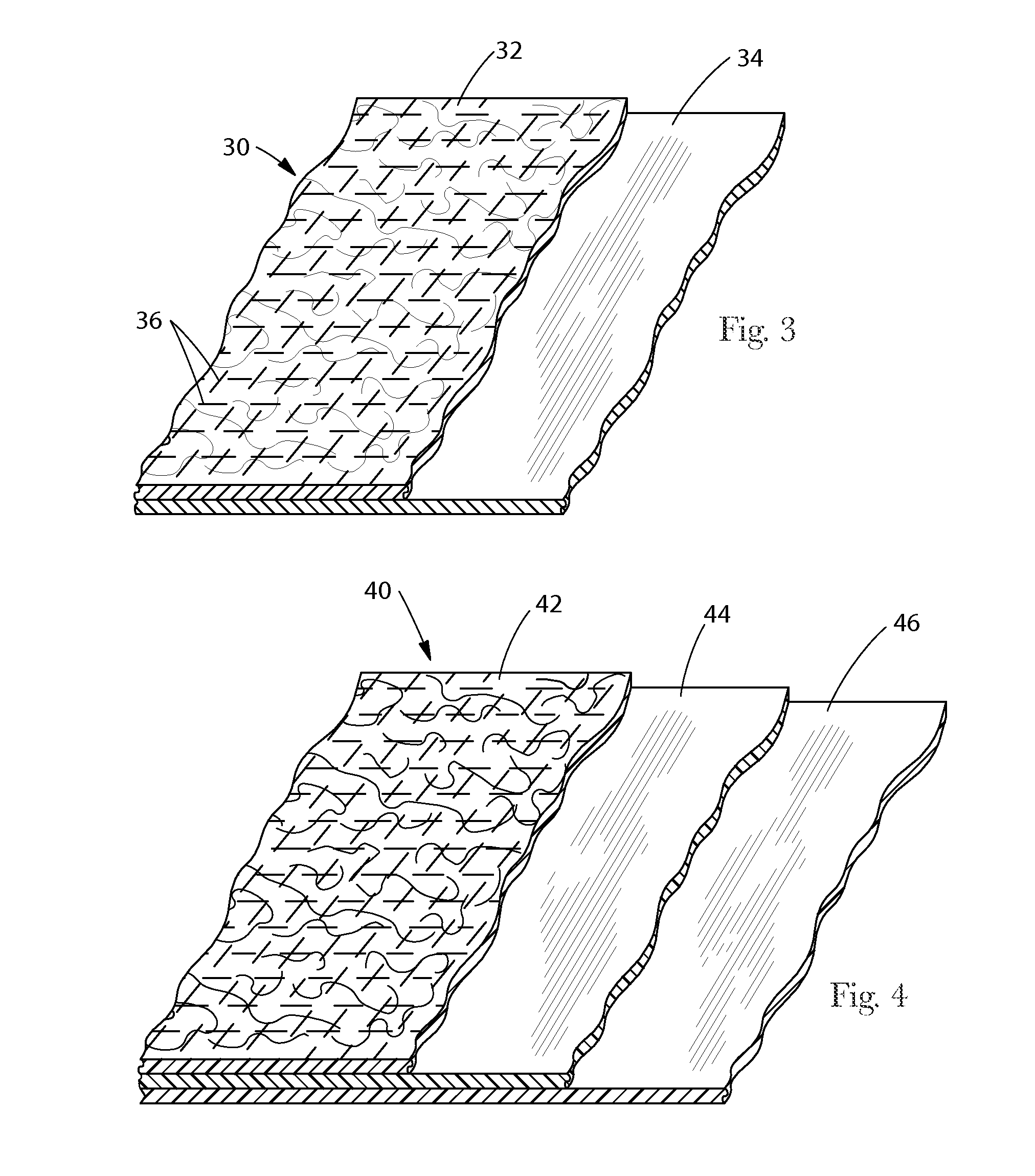Laminates with Bonded Webs
- Summary
- Abstract
- Description
- Claims
- Application Information
AI Technical Summary
Benefits of technology
Problems solved by technology
Method used
Image
Examples
examples 1-3
[0118]On a spunbond line with bicomponent capability, different spunbonds were prepared. The filaments prepared were of core / sheath type with polypropylene (“PP”) core, polyethylene (“PE”) sheath and with different core / sheath ratios. The PP had a meltflow index (MFI) of 25 g / 10 min (ISO 1133; 230° C.; 2.16 kg) and the PE had a meltflow index of 17 g / 10 min (ISO 1133; 190° C.; 2.16 kg). The line settings were adjusted such that the filaments had the desired average titer. Bonding of the spunbond nonwovens occurred with a standard calender and with different bonding areas. The bonding temperature was set above the standard bonding temperature. Details of the manufacture of the spunbond nonwovens and of their properties are given in the following table.
FmaxElongation inInkNeckdownCalenderCalender(CD)CD @ FmaxTiterRub TestModulusBond AreaOilN / cm%dtexMg / cm2N / m%TemperatureMaterialExample C15.2642.40.150167719standard20 g / m2PP spunbondExample C22.42002.50.32673016standard22 g / m2PP / PE bico...
PUM
| Property | Measurement | Unit |
|---|---|---|
| Fraction | aaaaa | aaaaa |
| Fraction | aaaaa | aaaaa |
| Elongation | aaaaa | aaaaa |
Abstract
Description
Claims
Application Information
 Login to View More
Login to View More - R&D
- Intellectual Property
- Life Sciences
- Materials
- Tech Scout
- Unparalleled Data Quality
- Higher Quality Content
- 60% Fewer Hallucinations
Browse by: Latest US Patents, China's latest patents, Technical Efficacy Thesaurus, Application Domain, Technology Topic, Popular Technical Reports.
© 2025 PatSnap. All rights reserved.Legal|Privacy policy|Modern Slavery Act Transparency Statement|Sitemap|About US| Contact US: help@patsnap.com



